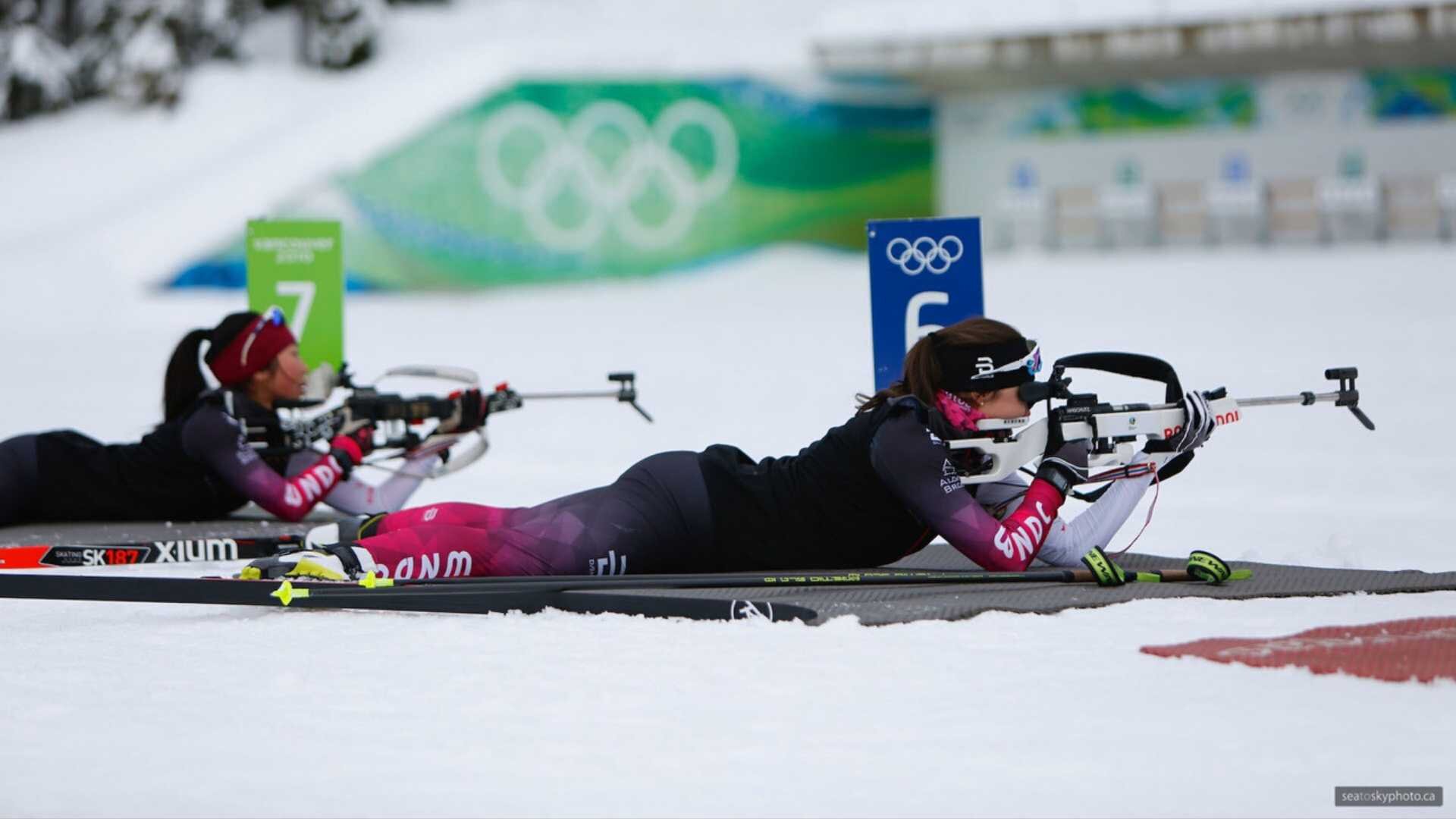Written By Guest User, Posted on May 22, 2020

This interview was conducted by Travis Gladue-Beauregard and compiled and edited by Lucas Holtvluwer.
Just what are Canada’s Olympic athletes up to in between Olympics? To find out, the TNT interviewed one aspiring Olympian from Calgary, Alberta, Gillian Gowling, to learn more about the sport of biathlon, the training that goes into it, and how athletes compete for the honour of representing Canada on the world stage.
“I am an athlete on the U24 Canadian national team, and I train out of Calgary, Alberta. I’ve been doing biathlon for, I think about 10 years now. I got involved in the sport when I was around 12 at the Canada Olympic Park. It’s really grown over the past couple years, I think just with more exposure and people who do cross country skiing have sort of transitioned over to biathlon as well. Just because there’s two disciplines to it. You have the cross country skiing part of the sport as well as the shooting. So it makes things a little bit more interesting.”
“I would like to go to the Olympics. Obviously, that’s a pretty big goal for me. Something I find really satisfying is making little goals and trying to accomplish those and hopefully someday, by accomplishing those little goals I set out for myself, I’ll be able to hopefully one day make it to the Olympics.”
“To make the Olympic team, you need to be definitely one of the best athletes in Canada, at a senior level. Generally, to make the Olympics there’s people that become prequalified for your nation based on how they did in a previous season, if they’ve come, let’s say in the top 20 on the World Cup. The Canadian governing body will decide just based on your World Cup ranking, essentially. So for me, if I’m talking about my progression to the Olympics, my next goal would be to race more on a senior tour.”
“For World Cup spots, I think there can only be like four or five women racing world stuff at a time. The athletes that are making the World Cup are the athletes on the senior national team. Sometimes, based on qualification races that can change. Our women’s team is pretty strong. Even within the senior national team, there’s a lot of competition to make the Olympics or the World Cup. It’s like super fluid though, it changes all the time. If someone has a really good result on the IBU Cup, which is the level below the World Cup, they’ll be moved up to World Cup.”
“Biathletes are trained how to safely handle rifles. Before you even start shooting there’s obviously that’s a huge component of safety just because we want to practice a safe sport and make sure everyone’s handling firearms responsibly. When I got into biathlon, I was pretty young. So I started off on air rifles. That’s generally like if you’re a younger athlete what you start on and then once you get older, then you move to a .22.”
“When it comes time to purchase, or wanting to own a biathlon rifle, you need to go through to get your PAL and take a firearm safety course on top of the other safety training you’ve done. The safety we learned is obviously you can’t point the rifle at anyone, it always has to be like downrange and things like that. During a competition, if you have any safety violation, you’re normally disqualified. Just because, again, safety is the top priority.”
“Doing biathlon obviously takes a lot of resources to be able to compete and just everything that goes into it and without sponsors, like the NFA, it just wouldn’t be possible. To be able to go over to Europe and race, obviously that’s pretty expensive. Racing just wouldn’t be possible without the support and the NFA has been a huge supporter of mine so I’m really thankful for them helping me follow my dreams and helping me keep going with my sport.”
Thanks for reading this interview! If you enjoyed this and you have an idea or suggestion for TNT’s next interview piece, send us a message on social media or drop a comment below.
Very well presented. Every quote was awesome and thanks for sharing the content. Keep sharing and keep motivating others.